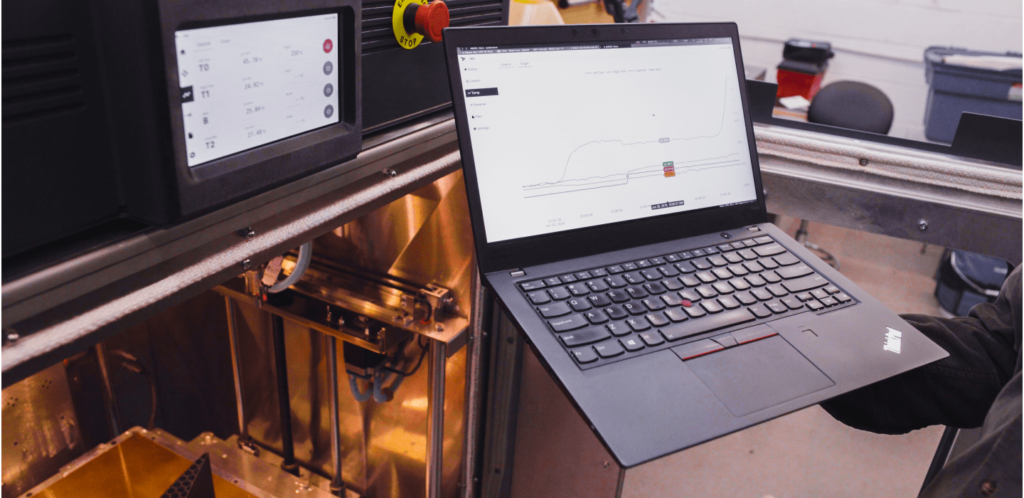3D Printing with PEEK, PEKK, & ULTEM™
Join AON3D's 3D printing application and materials experts for a 30-minute session that covers all the key information
Open filament 3D printers are designed to fabricate using any filament that fit the machine parameters, from a wide range of materials suppliers. This offers end-users the opportunity to choose the filament that suits their project needs while also selecting the supplier that meets their material quality and cost requirements. By contrast, closed filament 3D printers lock their users into printing with a limited selection of filaments, often provided by the manufacturer of the machine.
Choose the Filament That Fits Your Project
The number of suppliers offering filaments used in the 3D printing market is large and expanding, with hundreds of choices available for high-performance industrial 3D printers. This number grows even more when you consider the many grades and varieties of different polymers used in filaments.

An abundance of choice for materials in industrial 3D printing is incredibly important; designers and engineers can choose the materials that fit the mechanical and thermal properties they need, as well as offer the necessary resistances for their application’s operating environment. Moreover, even the same filament supplied by two different suppliers can offer significant differences in performance, quality or properties.
So, material science is always moving. As new filaments are added to the market, an open filament 3D printer enables you to add new materials to your additive manufacturing practice and build parts for new applications.
As additive manufacturing professionals continue to look for ways to fabricate parts that can stand up to the most demanding conditions and applications, they will inevitably look to new materials. Materials unlock applications, and open filament 3D printers like the AON-M2 open the door to more materials.
Benefit from the Economics of Filament Supplier Competition
The open filament market is driven by free market forces. Even the highest quality manufacturers – often major chemical companies and material trademark owners – are forced to compete with reasonable premiums on their filaments. Paying massive premiums on widely available materials, like ABS, needlessly cuts into your budget if the resulting final part properties are equivalent.
You also gain access to top tier vendors and manufacturers when relying on an open filament additive manufacturing system. Rather than relying on companies that split their resources between hardware and materials, you benefit from the expertise of leading chemical brands and the high quality filaments they produce.
The Costs of Closed Filament 3D Printers
Many industrial 3D printer manufacturers lock their end users into using a set of expensive proprietary filaments, significantly increasing upfront costs as well as lifetime operating costs. This comes from both the costs of the OEM materials as well as the licensing agreements that come with using those materials. Estimates suggest that materials account for up to 80% of the total cost of ownership for closed filament systems.
Another risk of adopting closed filament 3D printers is that you create supply chain dependencies, which could significantly harm your business. Trusting a single OEMto maintain a consistent quality stock of your desired material at a fair price, as well as continue to support the paired hardware system, is not considered a best practice with regards to supply chain security.
Lastly, when you consider the access that open filament 3D printers offer, the flipside is that closed materials systems force you to accept a major opportunity cost. Closed filament 3D printers remove opportunities to rapidly innovate with new materials, test new build profiles and participate in the wider open source 3D printing materials community.
Supplier-Specific Build Profiles Supercharge Open Filament Systems
High-performance materials, such as PEEK and PEKK, are sold in a wide variety of grades that vary in composition and purity, which both affect crystallization kinetics. To ensure that the final part properties meet your application needs, look for 3D printing manufacturers that offer build profiles tailored to different material suppliers.

At AON3D, our materials engineers work with leading filament manufacturers to craft build profiles, free of charge for every AON-M2 end user.
This empowers you to begin printing with a wide variety of engineering and aerospace grade materials without having to manually identify from scratch the best parameters for fabricating your part.
